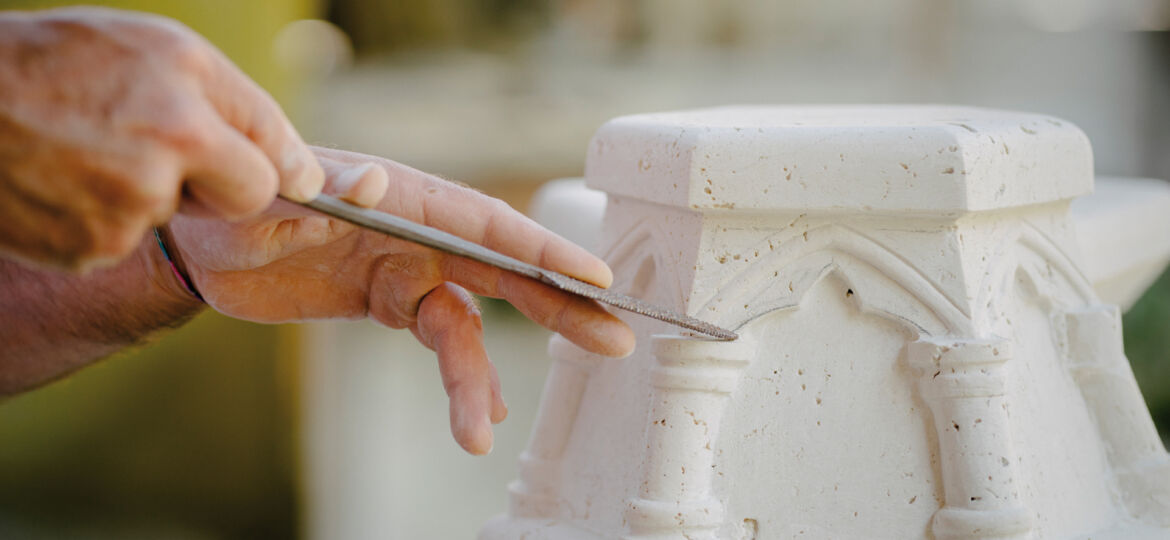
The story of a journey of experimentation and research, made up of personal and professional growth, exploration of techniques, and rediscovery of ties and inspirations, which finds origins, concreteness and authenticity in artisan creativity.
Alessandro Virgulti and travertine. Living matter, contemporary craftsmanship
Alessandro Virgulti ‘s work is a representation of a journey.
The journey begins with an almost innate passion for the raw material, travertine, and a close relationship with the mother quarry: his workshop is nestled in the rugged nature of the Rosara quarry, near Ascoli Piceno, a jewel of travertine.
From the slab to the making of the handcrafted one-of-a-kind piece: in between there is much study, experimentation with materials and research in techniques, enhanced and transformed by strong ties and inspirations drawn from places of origin. A life journey, then, of artistic and personal training and growth, as a man and as a craftsman.
A creative, that’s what he calls himself and tells himself.
“I started from conceptual, contemporary art. Initially I was attending the restoration course at the Academy of Fine Arts in Macerata. Then the first approaches to sculpture, during the two-year sculpture course, also at the Academy. Only later did I turn to handicrafts for a living.
My change of focus from contemporary art to craftsmanship has led me to be a creative in the craft of travertine and to conceive and design with the goal of bringing contemporary art and craft together. Contemporary art, from which I started, remains part of me, part of my creative journey. On the other hand, it was a short but very intense experience, with awards and several personal satisfactions, and particularly influenced by getting to know Academy lecturer Franko B, who holds the Chair of Sculpture. It opened up so many new possibilities for me and my fellow students, took us to artists’ studios in London, involved us in exhibitions and contemporary creative projects.
At the same time, travertine craftsmanship was also part of me even then. I dedicated my thesis in sculpture precisely to the travertine quarry that would later become the center of my later creative production.
In fact, the thesis was on the recovery and reclamation of a quarry and its repurposing for artistic use, not only for handicraft production but also as a container for cultural experiences, a location for artistic activities and performances, and also for educational activities. Quarry education is very important and is particularly close to my heart.
We show children and young people the quarry, how mining was done in Roman times to the present, and engage them in hands-on activities with light chisels and hammers to make an artifact in an hour to take away with them. Then we demonstrate how to create a dry arch using bricks that I make from travertine. And finally, bricks galore to create freely.”
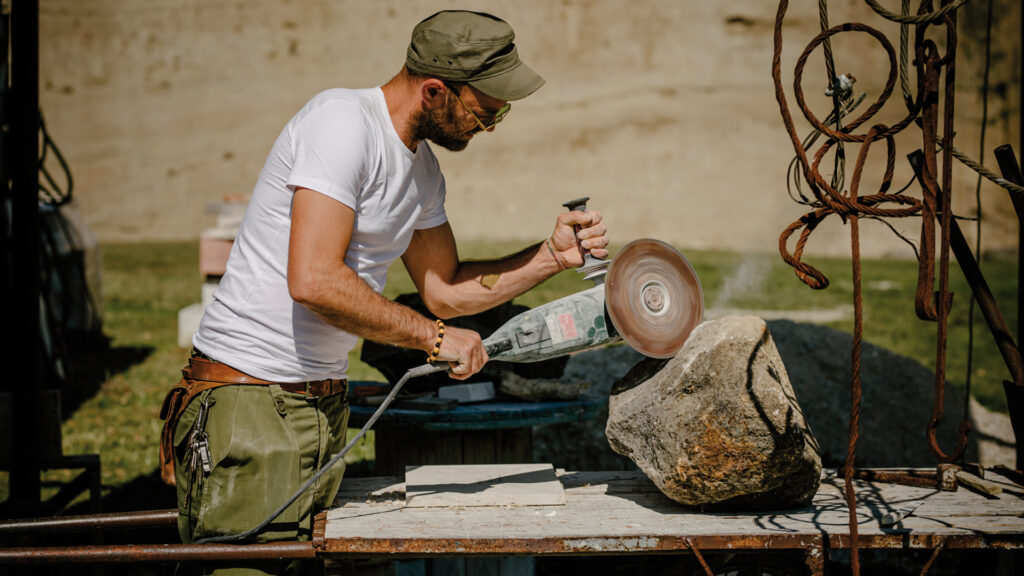
The kit of bricks is a curious and very nice creative idea of Alessandro Virgulti who, in a jute bag signed Cave Cavam, inserts 100 bricks in travertine (mini blocks in the shape of parallelepiped that allow many combinations) and a bag of gravel, to realize the magic of creating a bow and understand in a practical way the thrusts that characterize the structure, using a can or an object of cylindrical shape. An interesting tutorial on YouTube (CAVE CAVAM – Arch Tutorial) illustrates this technique and allows you to build your own miniature arch at home, using Cave Cavam’s beautiful travertine bricks, a product intended for everyone, children, modeling enthusiasts, miniature building reconstructions, and nativity scene setups.
“The travertine quarry where I work and where my workshop is located is of Roman origin. It ended up in the hands of a farmer, my grandfather, who dug as long as he could support his family in this way, then used the quarry as a stable and shelter for animals. In the quarry my grandfather also had his workshop where he created, invented tools for his work in the countryside. He had a flair for craftsmanship and creativity. And in this workshop, which he originally set up, I found many insights, memories and nourishment for my creativity. In later years, unfortunately, the quarry ended up in total neglect, even becoming a swampy place where water seeped through the wounds in the rock. And I decided to reclaim it myself, physically and personally, even driving an excavator, trying to imagine it without the vegetation that filled it haphazardly, beginning step by step to take care of it and turn it into a place of creativity and craft productivity but also welcoming the public, open to people. It is an evolving construction site. Very slow, thoughtful and conscious, and for this reason unique and special. Just as slow and thoughtful is the creative path that brought me here.”
The infinite creativeness of Alessandro Virgulti and his soul as a contemporary artist transposed into traditional craftsmanship are evident both in the particular and felt relationship he has with the material, both in the character of its most contemporary productions that will soon have their specific location in a showcase ad hoc, in Via Tibaldeschi, a few meters from the shop Cave Cavam, opened in 2016 in Piazza del Popolo in Ascoli Piceno.
“In the gallery dedicated to my contemporary production, original and very elaborate pieces of craftsmanship will find a place, a few sculptural objects will return, and subjects of a more personal character, ventures on travertine slabs, special engravings, even on very large surfaces, will be the protagonists. It is an attempt to take a step further, to experiment as a creative but also to grow as a person.”
However, all of Alessandro Virgulti’s work on travertine is the result of creative design and the use of techniques that aim to transform craftsmanship in contact with a contemporary spirit, revolutionizing it from within, right from the way it relates to the material.
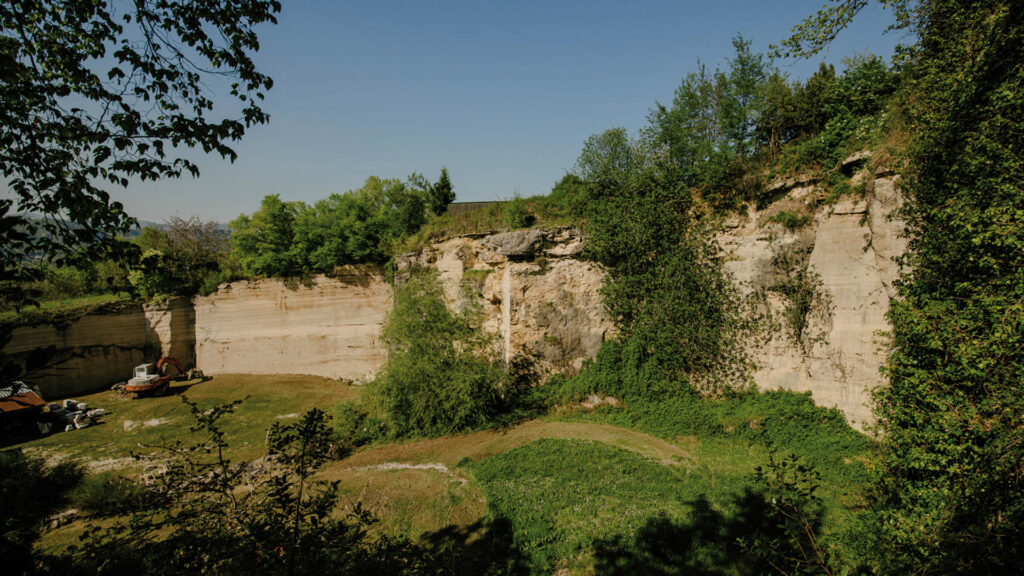
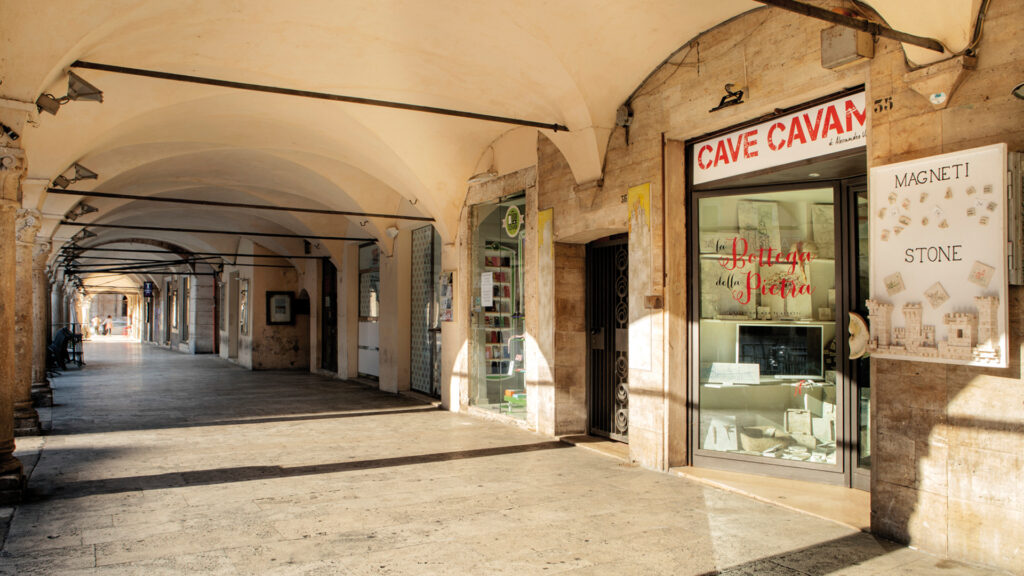
The use of acids on travertine to create “improvised surfaces”, porosity and natural designs is one of the fruits of this research, a figurative research that draws its inspiration and gives so to speak a continuity, a natural continuation, the live and unpredictable reactions that each slab of travertine has in contact with acids.
“The drop of acid that falls on the travertine creates effects, porosities, patches similar to clouds, tree canopies, depending on the concentration of acid I use and the characteristics of the individual stone, which in any case already has a base in itself, a kind of natural paint that characterizes its texture. At that point I ink the surface that has been created, with its new porosity, and I decide what to grout and where to distribute the color, so as to bring to life the painting on travertine, each time truly unique.”
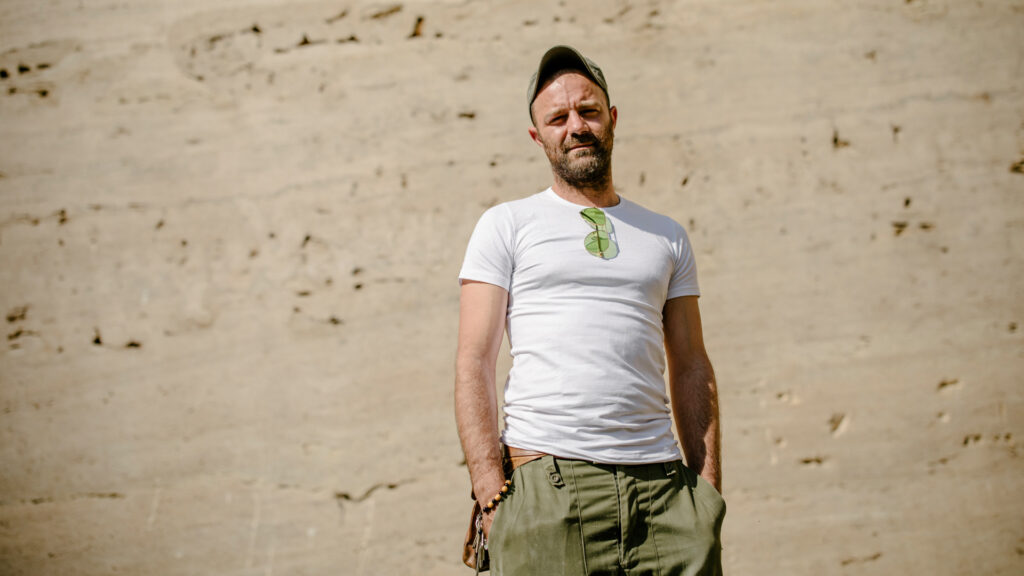
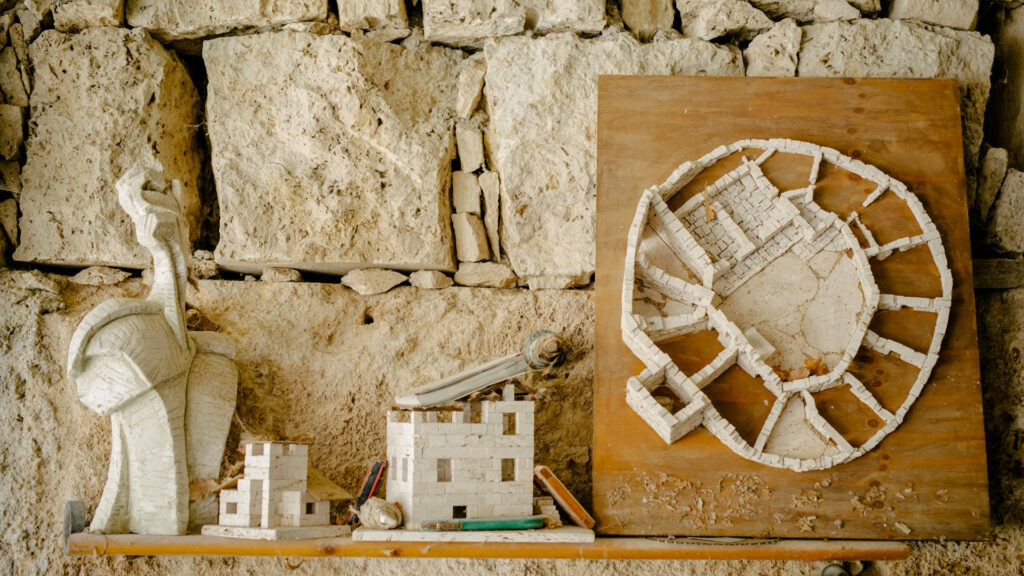
In each of her creations, the common thread is to try to combine a common thing with an ingredient that makes her more curious. Among his works in travertine, there are sculptures that break down and become boxes, or stone caskets, instead of the more usual wooden ones, with lock and key.
Also moving in this creative direction and search for the unusual are the collaborations he weaves with other artisans, particularly with goldsmiths, to make small travertine boxes for wedding rings. And also the collaborations he establishes with clients, always proving to be very open to customizations and the realization of projects, even the most curious ones, that are commissioned from him.
“What I find most satisfying in my work and the way I try to carry it out is the personal relationship with the public, even if it is just to discuss and confront each other, without too many filters or too much rigidity.”
And craftsmanship is also concretely this: a direct and immediate relationship with the person in front of you and his or her ideas, a creative dialogue that gives each person the chance to see something unique and valuable made that he or she will keep with them forever.
Laura Ricci

